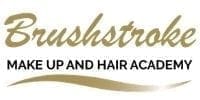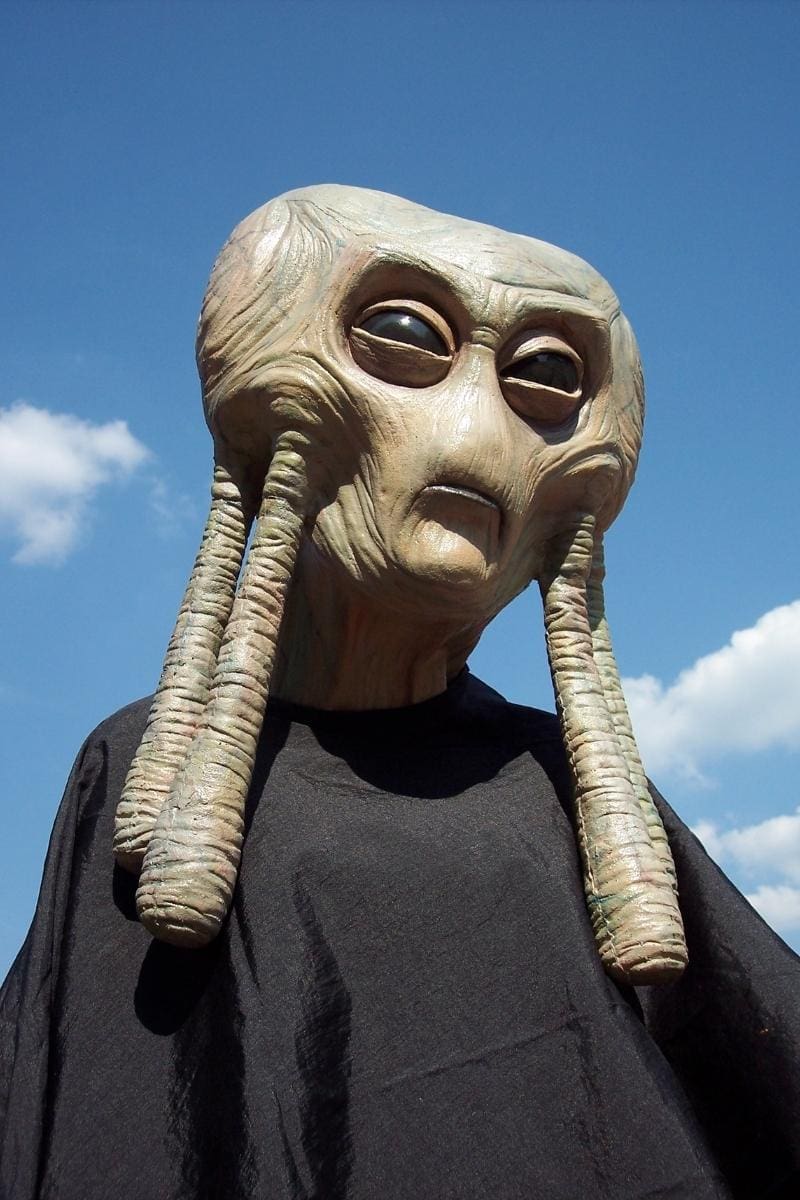Special Effects Makeup Courses (SFX) and Training For Film and TV
The trained special effects makeup artist can work across film and cinema, TV, and stage
If you’re interested in working as an artist in special effects makeup, you’re in the right place. Brushstroke courses will help you develop your skills and knowledge in all the key areas.
Careers in Special Effects Makeup
If you’re interested in special effects makeup (SFX), then you’re in the right place. Brushstroke is one of the UK’s top special effects makeup schools. We allow you to develop your skills and knowledge across a very broad range in readiness for a fulfilling career working in film, cinema and TV or indeed any part of the entertainment industry.
Successful SFX and prosthetics artists have a good grounding in the basics of makeup and hair. For example, make up application, familiarity with wigs, and health & safety. We offer a choice of diploma courses which focus on special effects and prosthetics as part of the wider training to turn you into a versatile make up and hair artist: the 2 Year BTEC Make Up and Hair, 1 Year ITEC Hairdressing and Barbering, 7 Month ITEC Makeup and Hair.
There are different paths open to you as an SFX and prosthetics makeup artist. You could, for example, specialise in designing and creating large film projects. Alternatively, you could work across different media (eg film, TV, stage), combining prosthetics with other areas of makeup and turn yourself into the kind of good ‘all-rounder’ that the industry is seeking these days.
What is Special Effects Makeup?
Special effects makeup, also known as SFX or FX makeup, is any makeup used to produce a visual effect or an unusual appearance. Injuries, old-age, monsters, zombies and alien characters are just some examples of what you can create with special effects makeup.
A Brief History of SFX in Films
Despite the widespread usage of makeup effects in films during the last few decades, when the business was first getting started in the early 1900s, few movies allocated time or resources to it. Most filmmakers were inspired by theatre makeup techniques. As the quality of cinema became more advanced, there was a demand for more realistic cosmetic effects. The actor Lon Chaney pioneered special effects makeup in the 1920s by developing his own looks for The Hunchback of Notre Dame, Phantom of the Opera, and other films.
In the early 1930s, the popularity of monster pictures sparked a boom in the field of cinema makeup. Central Casting alumni Boris Karloff and Jack Pierce cooperated on films like Frankenstein and The Mummy. Pierce was a major makeup innovator at the time. According to the New York Post, Pierce utilised cotton and spirit gum to manufacture prosthetics and green makeup that seemed eerily white on camera to create the monster’s look for Frankenstein. Over time special effects makeup techniques have changed to keep the effects as realistic as possible.
The Life of a Special Effects Makeup Artist
Depending upon your experience and the production itself, you could be creating a bald cap one day then an original special effect (such as a facial part or scar) the next. Alternatively, you might be working from ‘life’ – that is taking a cast from an actor’s facial features, head or body. Then you could create any number of prosthetic pieces, from acid burns to sci-fi monster. Essentially, the working life of a special effects make up artist can be so different from one day to the next.
Like all make up and hair artists, the job carries a certain degree of responsibility. For example, putting actors at their ease, explaining the process and making sure they are fully prepared for what might be a long and uncomfortable session. Patch testing their skin to avoid any allergic reaction to the materials you’re using is also an important part of the job.
Special effects and prosthetics artists have a critical role to play in continuity – that is, ensuring the look remains consistent throughout a production. This involves keeping accurate records of formulas, timings and processes to enable future replication. It also means being on standby to ensure that the prosthetics are holding up under shooting conditions. Then, ‘removable pieces’ will need to stored safely between takes to avoid damage or distortion.
Notable productions where special effects makeup features include obvious TV programmes like Casualty and Holby City. Of course, any production involving a traumatic or disaster-led storyline is likely to need some kind of SFX makeup. Such makeup is widely used in films, from Harry Potter to Darkest Hour. Even ageing someone can call for special effects makeup techniques.
The Skills and Techniques of a SFX Makeup Artist
The more you know about all aspects of makeup and hair, the better your employment options – whether you want to specialise in SFX and prosthetics or not.
These are the top 10 skills practised by successful special effects and prosthetic makeup artists and therefore taught on Brushstroke courses.
- Work from detailed briefs, drawings and specifications. Equally, be able to interpret ideas and create designs that fit a looser brief.
- Undertake background research for individual projects which will help you develop an invaluable knowledge bank as you become more experienced. This helps build you a reputation for thoroughness.
- Be good with people – the director, production professionals (including other makeup artists) and, of course, actors.
- Work with industry standard materials such as latex, gelatin and silicone.
- Be proficient in mould-making, casting, joining and removal procedures.
- Accomplish techniques such as face and body ageing using prosthetics, creating bald caps, false noses, wounds, scars, skin diseases and tattoos (good makeup application skills generally are really useful).
- Have creative flair and good craft skills (ideally sculpting), combined with a strong sense of colour and design.
- Be a capable hair and wig artist. Students on all our diploma courses and short courses are taught hair techniques to some degree.
- Possess excellent organisational skills and be able to work to deadlines.
- Develop good, confident presentation skills.
What next for the aspiring Special Effects Makeup Artist?
We recommend you get the very best training in special effects at Brushstroke – and other equally important makeup and hair skills. Whether you are a school leaver or career changer, there’s a course to suit you as an individual. You can graduate with recognised makeup qualifications AND the level of skills that future employers need – whether you’re seeking work in film, TV or the stage.
You’ll find lots of colleges, universities and schools promoting special effects make up courses and certainly, they’ll give you a good idea of what’s involved. But you’ll not receive the comprehensive training offered by Brushstroke. When you are starting out on your career, the film and TV industry want multi-skilled makeup and hair artists. That’s what we offer at Brushstroke. Then, if you want to specialise in SFX and prosthetics makeup, you’ll have all the training and background you need to make a go of it.
We have some renowned special effects make-up artist tutors working a Brushstroke – Barney Nikolic (Penny Dreadful, Harry Potter) and Catrin Thomas (Guardians of the Galaxy, Mary Poppins).
What is Prosthetics Makeup?
Prosthetics makeup is sometimes grouped with Special Effects (SFX) Makeup. But unlike the application of makeup and use of airbrushing techniques, prosthetic makeup uses casts to create transformational changes to faces, limbs and bodies. Creating prosthetics involves the creation of lifecasts (three-dimensional copies of body parts or even full bodies). These life casts allow the artist to create amazing creative pieces – from cuts, scars and bruises, to severed limbs and other fascinating, gory and realistic effects. These can be used in a diverse range of film genres from horrors to action films, and from war epics and historical dramas to science fiction. The full transformation of facial features to look like aliens, zombies, war victims and the like leaves much to the imagination of the creative makeup artist.

How are Prosthetics Made?
Casts are made of the actor’s body which is called lifecasting. The lifelike model provides the makeup artist with a canvas to mold their creation prior to applying it to the actual person. This process takes several hours depending on the complexity of the casting. For instance, the cast needs to match the skin tone of the actor. The length of time in achieving this will affect the total time of the creation.
Materials are used in prosthetics for different effects. For example, in the Wizard of Oz, foam latex was used because of its lightweight application which made it an excellent candidate for facial prosthetics. Foam latex forms the skin and muscles of puppets in stop-animation films, for example, in the 1990s cartoon series “Celebrity Death Match” the characters appear to be made of clay but were actually made of foam latex.
Another material is gelatin which has a high elasticity and flesh-like consistency that makes it ideal for prosthetic artists. Because of these properties, gelatine can be remoulded and recast over and over again to achieve the perfect look. Silicon contrast to small rubber is enjoyable. It is also waterproof and can be used at a range of temperatures to develop intricate and lifelike details.

How are Prosthetics Moulds and Lifecasts Made?
Prosthetic makeup uses different materials including gelatin, silicone, latex chips, gypsum cement and various paints and decorative materials. Prosthetic makeup allows you to form innovative creations with fascinating effects. You’ll get to turn people into wonderful, animated creations including animals, aliens, monsters, zombies, goblins, and fairy princesses. The possibilities are endless. There are also great opportunities at the end of a course in prosthetics makeup, including being a makeup artist for feature films and stage acting.

Our Tutors
Proper professional training from our tutors will set you on the road to becoming a skilled makeup artist.
Changing Career?
Changing career to become a makeup artist is within your reach – with Brushstroke training behind you.
What Courses are Available in SFX and Prosthetics?
At Brushstroke our 2 Year Makeup and Hair Course (a BTEC, Level 3 Diploma) is a fantastic opportunity to learn prosthetic and special effects makeup. The range of skills learnt on the course include advanced fashion makeup, hair styling and extensions, airbrush and editor techniques and a range of other core skills which complement a module dedicated to special effects and prosthetics. In the SFX and prosthetics module, you’ll learn an exciting range of skills from the use of flat moulds and bald caps to the creation of wounds and injuries.


